Nobility of the World
Volume VIII - Switzerland
The History and Register of
the Nobility of Switzerland
Switzerland having the characteristic
to be a confederation of states of which each one has its own history, we can't speak about " Swiss nobility " in
the singular but " Swiss nobilities " in the plural. Also remind that the concept of nobility or noble class postulates
the existence of a hierarchical society recognising the principle of the heredity of a function or social status. In the Middle Ages we also find in the various Swiss cantons only families
of feudal nobility and some ennobled families abroad. We found through Switzerland a great number of families of dynastes
who were vassals of the Holy Roman Empire, of the house of Savoy or of the Kingdom of Burgundy. This diversity
prevented the birth of a state with monarchical central authority.
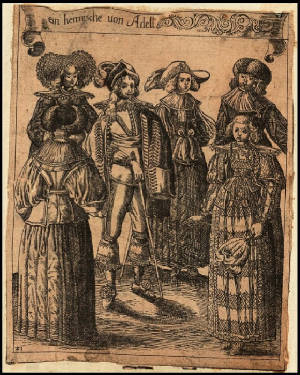
In Switzerland, since
the XIVth century, we can distinguish, except the particular cases, three modes of nobility: 1°) the nobility acquired
under the terms of the family right, i.e. by direct line (male and legitimate since the XVIth century). 2°) the nobility
resulting from a concession or a recognition of the Sovereign, which can be one monarch or a collective Sovereign. This maybe
individual, family or collective concession. The Sovereign can also recognize an ennoblement conceded to one of his subjects
by a foreign sovereign. Also there exists "reward's ennoblements" conceding only the possession of a title. 3°)
the nobility acquired by integration [For example: Affry in XVth century, Reyff (1577) Pontherose (1443), Vevey (1523), Vandel
(1526), Hugues (1544) ]. This integration frequently results from a social rise and of one or more alliances with families
belonging already to the nobility. Sometimes that was accompanied by the acquisisition of a noble domain (the seigniory of
Mézières was bought in 1547 by Jost Freitag who was consequently qualified noble).
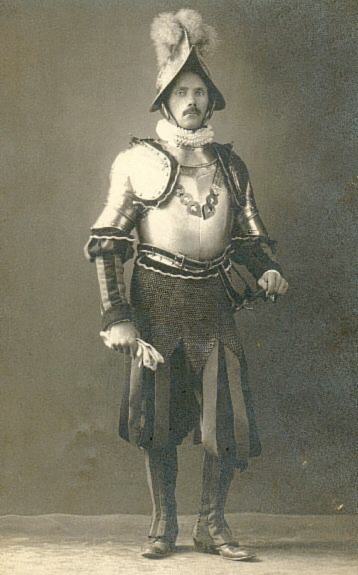
The loss of nobility
did not exist in Switzerland where the social classes were closer than in other countries. Juridically there is
neither misalliance nor loss of nobility due to the manual work or to the trade. So Noble Jean Gambach was in 1442 Fribourg in
order to be able to reach the load of banneret; it was in particular the case for some lines of the families Fégely,
Gottrau, Reynold, Reyff, etc.. Each state had its own constitution, its currency, its jurisdiction, its habits and customs,
its history and so its own nobility. So it's necessary to understand the Swiss nobilities to specify some nobiliary characteristics
of some "cantons". manufacturer of scythe, and Noble Louis de Daguet was a carter at the end of XVIIIth century.
The only cases of loss of nobility were the illegitimate line or the voluntary renunciation. This last case was met in.

BERNE - FRIBOURG - SOLEURE - LUCERNE
From XVth century there was a power's
increasing of the cities and their citizens and consequently there was an integration of the feudal nobility into the middle-class
of the cities. In some "cantons", as Bern, Fribourg, Soleure and Lucerne, the political power belongs
consequently to an upper class which is formed with noble families and new families proceeding from the middle-class of the
chief town of each state. These no noble families and the ancient noble families held the power with an hereditary right to
the governmental loads. This matter of fact increased gradually and ended towards 1600 to the institution of a privileged
class. In 1627 in Fribourg, this class was officialized by a letter known as "lettre des deux-Cents". Then this
class were constitutionally composed with the families eligible for the Sovereign Councils. In Fribourg this class, the patriciat,
was closed in 1684 and half-opened only at the end of XVIIIth century.
The Sovereign of each state was not a King but the Council and the subjects of each republic
had only one sovereign, who was a collective sovereign. These "patriciats" were renewed by co-optation and some
of his families were ennobled abroad. Some of these collective sovereigns granted ennoblements: In 1547 Bern set up the seigniory
of Batie-Beauregard in barony in favour of Jacques Champion; In 1665 Soleure granted letters of nobility to the brothers Marcacci
of Locarno; In 1712 Bern set up the seigniory of Bercher in barony in favour of Jean-Louis de Saussure.
In Fribourg at the end of XVIIIth
century the privilege of eligibility to the governmental loads was the exclusive prerogative of the patricians. In 1781 this
"patriciat" is composed with four categories of families: 1°) noble families with titles (Affry, Alt, Diesbach,
Maillardoz, Castella de Berlens); 2°) noble families without title (Boccard, Fégely de Vivy, Fivaz, Gléresse,
Griset de Forel, Lenzbourg, Maillard, Praroman, of Prel, Reyff de Cugy, Reynold); 3°) the patricians families of noble
origin, but of which the nobility was not thought of (Fégely de Prez for example); and 4°) the patricians families
without noble origin (Buman, Castella, Reynold, Weck, Wild, etc...). Due to the constitution of 1404 the members the first
two categories of families were excluded from the loads of "banneret", "secret" (member of the secret
council) and "grand sautier" except if they renounced their nobility. Also there were in the canton some families
who were ennobled and who were not patricians and whose nobility was not recognised by Fribourg (Besson, Chassot, Gapany and
Tercier). In the "canton" of Fribourg the only still extant family of feudal nobility is the house of La Roche became
Schenewey who lost its nobility in the XVIth century.
In 1782 the Sovereign of Fribourg decided to standardise the situation of these families.
He removed all the titles except "noble", authorised all the patricians to use the nobiliary particle "de"
(or "von"), and specified that henceforth the loads of "bannerets", "secrets" and "grand-sautier"
would be opened to all the patricians. By confirming that all the patricians families were noble either by origin or by being
member of the privileged class, this "Règlement relativement à l'introduction de l'égalité
des familles patriciennes et de leurs titulatures" (17th and 18th of July 1782) is not really a collective ennoblement
but the official confirmation of a state of things.
In Bern a constitutional law created in 1643 the privileged class of the eligible families
to the Great Council. Since 1731 the Sovereign prohibits to use titles of nobility conferred by foreign sovereigns; Since
1761 the patricians were authorised to be called "wohledelgeboren"; Then on the 9th of April 1783 the patricians
were authorised to uses the nobiliary particle "von" (or "de")..
In Lucerne at the end of XVIIth century the patricians
were named with the title "Junker" and regularly made use of their nobility when they were abroad, particularly
when they served in the foreigner armies. Some families also received foreigner letters of nobility. In Soleure the patriciat
in fact was formed gradually. Some families set up the corporations to be able to control the co-optation. So the capacity
passed to a definite number of privileged families who then formed a noble patrician whose members were qualified "Herren
und Bürger". Numbers of these families accepted letters of nobility abroad, particularly in France.
- Noble Families of Berne
- Noble Families of Fribourg
- Noble Families of Soleure
- Noble Families
of Lucerne
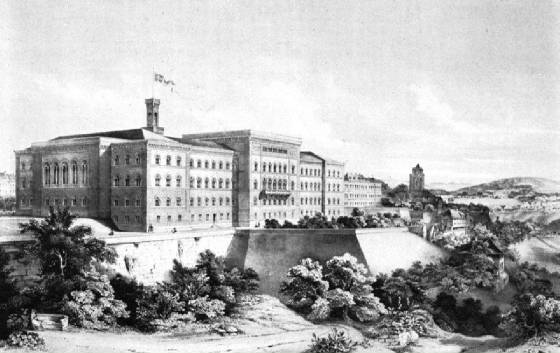
URI - SCHWYZ - UNTERWALD
In the cantons of Uri, Schwyz and
Unterwald, the political evolution from the Middle Ages to the XIXth century was realised by a relatively similar way but
really doesn't lead to the constitution of a "patriciat" but rather to the formation of a relatively closed class
of new families sharing the political power with the ancient noble families. Some of the new families were ennobled abroad
while others were incorporated to the Nobility by "integration".
The canton of Schwyz counted several families of ministériaux such Reding.
- Noble Families of Uri
- Noble Families of Schwyz
- Noble Families of Unterwald

The Noble Families
of Zurich
In 1400 the city of Zürich formally
became autonomous with regard to the Holy Roman Empire. Before this date the only noble families were families of ministériaux.
Quickly the political power came to the corporations while giving a dominant position to the noble corporation of the "Constaffel"
in which was constituted a "noble chamber" called "adelige Stube zum Rüden Stübli". The members
families of the Corporations were mainly in them by heredity
The members of Stübli used the title "Junker". In 1798 the Stübli did
not count any more than eleven familles. The Bonstetten family came to Bern in 1463 and ended in 1606. Some still
extant families of the nobility of Zürichreceived additionally foreigner titles such as the Hirzel, count in France in 1788.
The Noble Families
of Schaffhouse, Zug
In the cantons of Schaffouse and Zug,
the political power belonged to the corporations. So there was not real hereditary prerogative for the governmental loads.
In the canton of Zug the few families who had received letters of nobility abroad are extinguished. The very democratic
system of this canton hindered a nobility expansion.
In the canton of Schaffhouse the noble families formed since the XIIIth century the "Herrenstube"
which became during the XVth century one of the twelve corporations. Some ancient families were extinguished and replaced
in the "Herrenstube" by new families of the "integration nobility". In 1864 these families were maintained
in their right to be buried in the "Junkernfriedhof", their last privilege.
- Noble Families of Schaffhouse
- Noble Families of Zug
Noble Families of Valais, Thurgovie, Tessin
In the cantons of Valais, Thurgovie and Tessin,
the former noble families were maintained and only some families were ennobled abroad. The "patriciat valaisan"
which provides in particular the bishops-princes, was formed with families of old nobility but also with some families
incorporated into the Nobility either by possession of a right of jurisdiction either by membership to the "nobility
of integration". Some of these families also accepted letters of nobility abroad. This patriciat was not a patriciat
of right but in fact.
Tessin, before becoming Swiss canton in 1803, did not form a political and administrative unit and there is thus
no "nobility of Tessin" in a strict sense, however there are some noble families originating from this area. In
Locarno, at the Reformation, two of the three great feudal families of capitanei: Muralto and Orelli emigrated in [[Zürich].
A branch of Muralt was established in Bern. The third great family, Magoria, remained in Locarno. The majority of the families
of Tessin ennobled abroad were it by the dukes of Milan.
- Noble Families of Valais
- Noble Families of
Thurgau
- Noble Families of Tessin
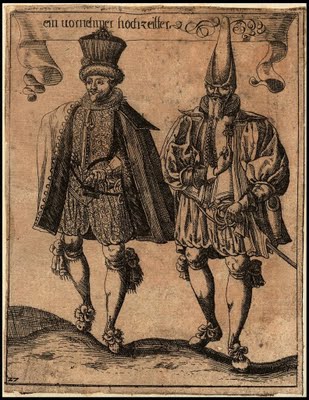
The Noble Families
of Grisons
In the Grisons there was a great number
of families of dynasts and "ministériaux". From the XIth or XIIth century, the dynasts owned seigniories
on which they held power more in fact than by resulting of a constitutional law. These families maintained their privileges
until XVe century and some families preserved an important situation, in particular Salis and Planta, while some others were
ennobles abroad. In 1794 the Leagues enacted the radical cancelling of the nobility, titles and particles. This prohibition
was confirmed in 1803 and 1848.
- Noble Families
of Grisons
The Noble Families of Glaris, Appenzel
These cantons never had of nobility of right. However in Glaris there are some families ennobled
abroad. In these cantons the families descended from
the "State's chief" and from the bailiffs formed in fact a class of "integration nobility".
- Noble Families of Glaris
- Noble Families of Appenzel

The Noble Families
of Aargau
This canton where is the castle of Habsburg remained
under the Austrian domination until 1415, when it has been conquered by Bern and Zürich which divided it. The current
canton born only in 1803, with Bern and Zurich land and what was for a short time the Principality
of Frickgau, sometimes known as the Canton of Fricktal. The ancient noble families of Aargau were maintained in different
cantons, and around the World, such Mülinen and Hallwyl inBern, or abroad such Reinach in Alsace.
- Noble Families of Aargau
- von Habsburg
- von Laufenburg
- von Lenzburg
- von Rheinfelden
- von Sulz
- von Tegerfelden
- von Hallwyl
- von Klingnau
The Noble Families of Vaud
The canton of Vaud, old county
then country of Vaud, depended successively of Burgundy, Zähringen, Savoy until 1536, then of Bern. In this canton
there were some feudal noble families, families of Savoyard nobility, families of the patrician nobility of Bern, and families
of "integration nobility".
The
Noble Families of Neuchatel
In the canton of Neuchâtel, Principality since 1643, the nobility increased
by ennoblements of the Prince, these ennoblement letters were subject to be ratified by the Council of State. Neuchâtel
became Swiss canton in 1815 and staid paradoxically a Prussian Principality until 1848.
- Noble Families of Neuchatel
The Noble Families of Geneva
Since the Reformation the Republic
of Geneva did not officially recognise the nobility as an organised corps. There were families of old nobility, families
of "integration nobility", families who were ennobled abroad, and a great number of noble families refuge at the
time of the Reformation.
However it should be noted that, contrary to the generally accepted ideas, the Republic of Geneva made use of its
capacity to ennoble. It is in particular what it did on August 20 1680 by ennobling with a title of count the Noblet family.
- Noble Families of Geneva
- von Genf
The
Noble Families of Basel
In 1382 the constitution reserved four seats of the Council for the noble families. From
the next century the corporations and thus the town's citizens took the power. The noble families of this time preferred to
leave Basel which consequently will have a corporative system. The nobility was then prohibited in Basel. An exception
was made for the "barons Wieland" in 1816 under the condition that they will not use their title in Basel. However
there are some noble families whose nobility and titles are earlier to their reception as citizen of Basel.
The Noble Families of St. Gall
In St. Gall some powerful families formed a kind of patriciat whose members belong to the
"adelige Stube zum Notenstein". Some of these families consolidated their position by receiving nobility's letters
abroad. In 1778 the Sovereign Council fixed the list of the seven families of the "Notenstein" which constituted
in fact the nobility of St-Gall. Some families which were not members of the "Notenstein" received nobility's diplomas
abroad.
- Noble Families of St. Gall
- von Rapperswil
- von Toggenburg
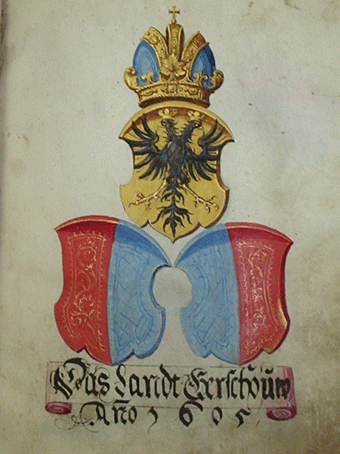
The Current situation of Swiss
Nobility
Since
1798 the nobility does not exist any more as a privileged class but simply on the historical level. However there was an aristocratic
restoration in Lucerne and Freiburg 1814 to 1831. Now there are about 450 noble families remaining in Switzerland, either
of the one of the Swiss nobilities or of a foreign nobility. By counting 15 people per family, we obtain a proportion of 1,06
°/oo of the population, which is equivalent to the French noble density. However it's necessary to note the cantonal inequality
of this density; the canton of Appenzell having nearly anyone noble family while the canton of Vaud having more than one hundred.
Today the nobility not having legal existence in Switzerland, the titles of nobility appear neither in the registry offices
nor in the official instruments. Sometimes they are tolerated in some administrative documents and in the professional life
to the social relations.

